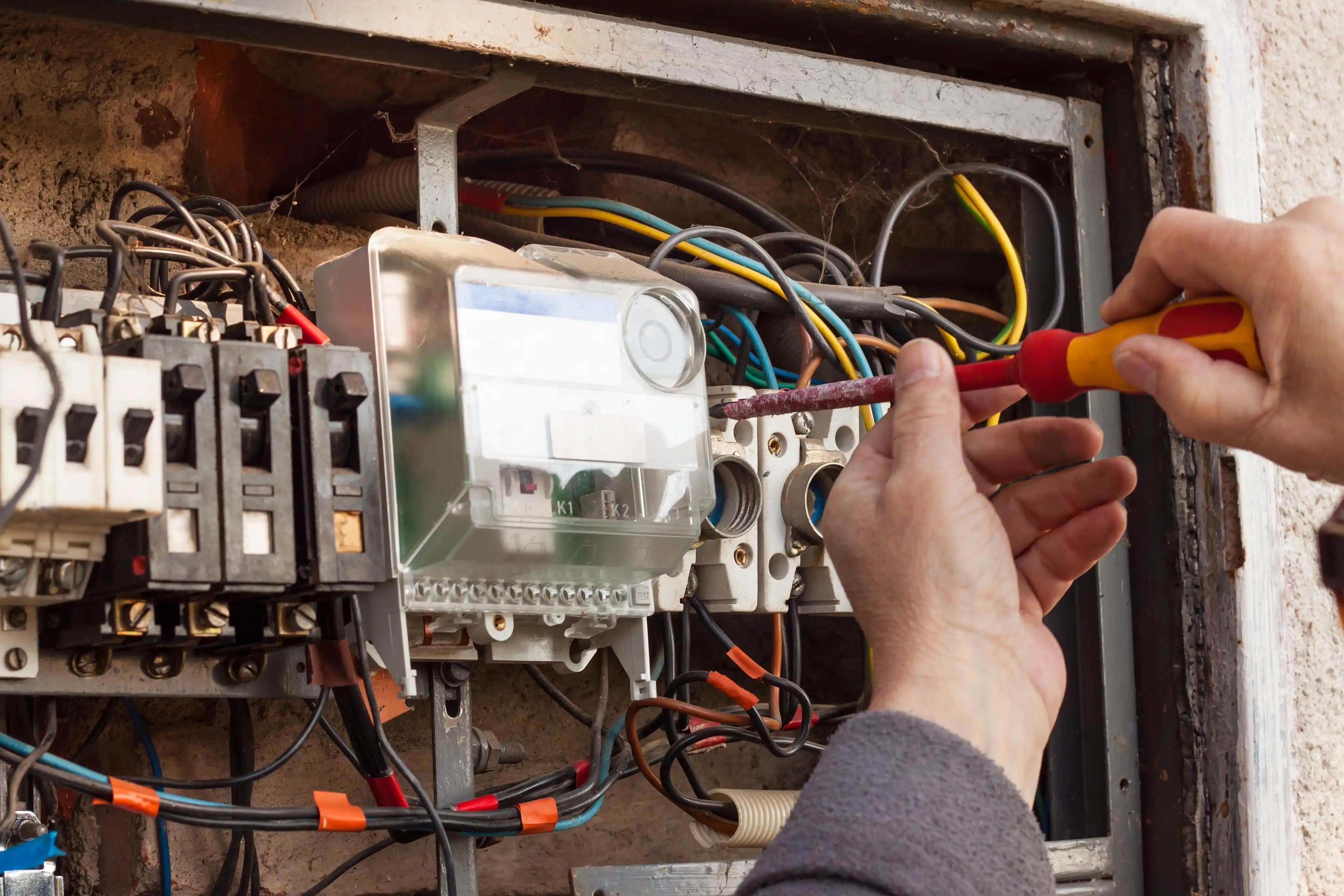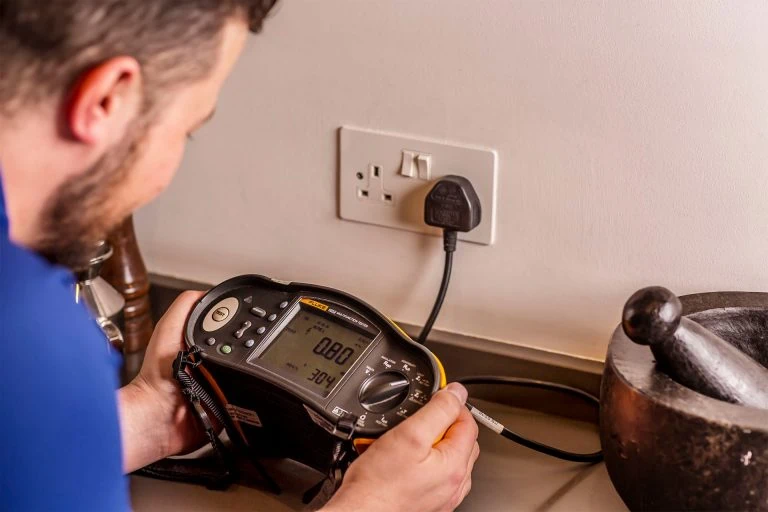Usual Electrical Problems Every House Owner Should Know Regarding
House owners frequently encounter various electric issues that can affect safety and capability. Issues like flickering lights and stumbled circuit breakers are a lot more common than numerous understand. These situations can show deeper electric issues that warrant attention. Recognizing the signs and threats connected with outdated wiring and dead outlets is necessary. What measures can be taken to protect against these problems? Checking out these common electrical concerns can reveal vital insights for preserving a secure home setting.

Flickering Lights: Reasons and Solutions
Why do some home owners experience flickering lights? Flickering lights can be a typical nuisance, frequently suggesting underlying electrical concerns. One main cause is defective or loose links within lighting fixtures or electrical wiring, which can lead to intermittent power supply. In addition, making use of high-wattage appliances on the exact same circuit may trigger voltage changes, leading to flickering or lowering. Another prospective concern is an overloaded circuit, where way too many devices attract power at the same time, stressing the electrical system. Abject or out-of-date electrical wiring can contribute to inconsistent electric circulation. Sometimes, flickering lights might signify a trouble with the home's electric panel or service line. Homeowners must address flickering lights promptly to stay clear of potential risks. Solutions may consist of tightening up links, rearranging appliance load, or seeking advice from a licensed electrician for an extensive analysis. Recognizing the origin cause can help guarantee a secure and secure electrical system in the home.
Tripped Circuit Breakers: What You Required to Know
Have home owners ever wondered what creates their breaker to journey suddenly? This usual problem often occurs from an overload of electric circuits, where way too many gadgets draw power concurrently. In such situations, the circuit breaker acts as a security system, disrupting the flow of electrical power to avoid getting too hot and prospective hazards. An additional regular cause is a brief circuit, which happens when an online wire calls a neutral wire, producing a rise of power that trips the breaker. Ground faults can also result in tripped breakers; these happen when a real-time wire touches the ground or a grounded surface, posing severe safety risks. Homeowners must regularly examine their use of high-wattage devices to avoid overwhelming circuits. Furthermore, understanding the feature of circuit breakers can aid them react appropriately during a journey, ensuring their home continues to be well-kept and secure.
Outdated Wiring: Indications and Dangers
Outdated electrical wiring can position substantial risks to property owners, commonly going unnoticed till issues emerge. Residences developed before the 1980s may still have light weight aluminum wiring or knob-and-tube systems, which are no more taken into consideration risk-free. Signs of out-of-date wiring consist of flickering lights, frequently tripped circuit breakers, or melting smells near electrical outlets. These indicators might recommend that the electrical system is overburdened or deteriorating.Additionally, property owners might discover scorch marks around electrical outlets or switches, which can suggest overheating. The risk of electrical fires substantially increases with obsolete wiring, as these systems were not designed to handle contemporary electric lots. Home owners are urged to have their electrical wiring evaluated frequently, particularly when renovating or adding new home appliances. By recognizing these signs early, they can prevent unsafe scenarios and keep a safer living atmosphere. Upgrading to current electric requirements is a positive action in keeping home security and efficiency.
Often Blown Fuses: Troubleshooting Tips
Regular blown integrates can indicate underlying electric issues that might stem from outdated circuitry or overloaded circuits. House owners experiencing this issue ought to initially determine the appliances connected to the influenced circuit. It is advisable to avoid utilizing several high-wattage tools concurrently, as this can bring about circuit overload. If the problem persists, inspecting the fuse box for indicators of wear or damages is important; a defective circuit box may call for replacement.Additionally, looking for loose connections within the circuit can assist prevent future occurrences. House owners should additionally verify that the merges being used are of the correct amperage, as using an incorrect fuse can intensify the trouble. Seeking advice from an accredited electrical contractor is advised to examine the electric system better if these troubleshooting pointers do not deal with the problem. Attending to these issues immediately can aid alleviate threats and guarantee the security of the home's electrical framework.
Dead Outlets: Common Causes and Fixes
When a property owner comes across a dead electrical outlet, it can typically provide stress and complication. A number of usual causes may lead to this concern. One constant culprit is a tripped breaker, which can be easily reset. If any type of breakers are in the off position, house owners should check their electric panel to inspect. An additional opportunity is a damaged outlet itself, which might call for substitute. Furthermore, loosened circuitry links within the electrical outlet can webpage interfere with power circulation, making assessment essential.Sometimes, the issue may stem from an overloaded circuit, especially when numerous gadgets are attached. In such cases, redistributing the electrical lots can fix the concern. House owners need to additionally take into consideration the age of their electrical wiring; older systems might need updates to fulfill modern electrical needs. If these actions do not correct the circumstance, speaking with a certified electrical expert is advisable to guarantee security and appropriate diagnosis.
Electrical Shocks: When to Be Concerned
Exactly how can homeowners determine whether an electric shock warrants concern? Property owners ought to initially analyze the intensity and context of the shock. A light static shock, typically really felt when touching steel items, is typical and commonly harmless. If the shock takes place while engaging with a plugged-in device or electrical outlet, it may suggest a much more severe issue.The place and frequency of the shocks are vital. Repetitive shocks from the same source, specifically in wet locations like kitchen areas or bathrooms, might signal defective circuitry or insufficient grounding. Homeowners ought to additionally take into consideration the experience of the shock; a shock that triggers pain or muscle mass tightenings is more alarming than a plain tingle.If there's any kind of unpredictability, it is a good idea to speak with a certified electrical expert. Disregarding potential electrical risks can cause serious security risks, including fire or severe injury.
Overloaded Circuits: Prevention and Precaution
Overloaded circuits position significant dangers in domestic settings, typically resulting in electrical fires or equipment damage (Sydney Level 2 Electrician). House owners should identify the indications of an overloaded circuit, such as regularly tripped breakers or dimming lights. Carrying out preventive safety and security techniques can aid alleviate these hazards and assure a much safer living setting
Acknowledging Overloaded Circuits
What indicators indicate that a circuit may be strained? House owners ought to be watchful for several essential indications. Frequently tripped breaker or blown integrates suggest excessive tons on the circuit. Dimming or flickering lights, particularly when various other appliances remain in use, can represent a poor power supply. Furthermore, outlets or switches that feel warm to the touch may suggest overheating, a potential fire danger. Unusual humming audios from outlets additionally call for attention, as they can signify electric concerns. If appliances operate inefficiently or stop working to begin, it may be an indication of an overloaded circuit. Identifying these indicators early can help stop severe electric problems and advertise a more secure home atmosphere.
Preventive Safety And Security Practices
To keep a risk-free and effective electric system, home owners need to execute precautionary safety practices that address possible circuit overloads. One reliable measure is to prevent linking way too many tools to a single electrical outlet, as this can exceed the circuit's capacity. Making use of power strips with built-in circuit breakers can help disperse power safely. Home owners must likewise frequently examine cables and devices for damage and replace any kind of malfunctioning tools without delay. It is crucial to assure that circuit breakers are working properly and to be knowledgeable about the total wattage being used in each circuit. Furthermore, consulting an accredited electrical contractor for routine inspections can determine possible concerns before they rise, guaranteeing a much safer living environment and lengthening the life-span of electrical systems.
Often Asked Inquiries
How Often Should I Have My Electrical System Inspected?
Routine examinations of electric systems are advised every three to 5 years. Property owners should take into consideration more constant checks if they experience concerns, take on restorations, or reside in older properties to ensure safety and conformity.
Can I Deal With Electrical Problems Myself or Hire an Expert?

What Are the Indicators of an Electric Fire Threat?
Indicators of an electric fire risk consist of often tripped breaker, flickering lights, burning odors, blemished electrical outlets, or cozy, humming cords. Home owners ought to continue to be alert and look for professional aid if any of these indications exist.
Just how Do I Know if My Home Requirements an Electric Upgrade?
To determine if a home requires an her latest blog electric upgrade, signs include frequent circuit breaker trips, obsolete circuitry, inadequate outlets, flickering lights, and the presence of older electrical panels, suggesting prospective safety dangers and ineffectiveness.
Exist Particular Safety Tips for Do It Yourself Electric Job?
When thinking about DIY electrical work, one Learn More Here must always switch off power, utilize insulated tools, validate circuit capability, follow neighborhood codes, and consult specialists for intricate tasks to assure safety and prevent mishaps. Another possible issue is an overloaded circuit, where also lots of gadgets attract power concurrently, stressing the electric system. The threat of electric fires significantly raises with outdated electrical wiring, as these systems were not made to manage contemporary electrical lots. Constant blown merges can suggest underlying electrical concerns that may stem from obsolete electrical wiring or overloaded circuits. To preserve a efficient and safe electrical system, homeowners have to execute precautionary safety and security techniques that deal with possible circuit overloads. Accredited Service Provider Level 2 Electrician. Indications of an electric fire threat consist of frequently stumbled circuit breakers, flickering lights, burning odors, blemished electrical outlets, or warm, humming wires